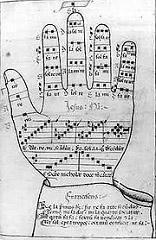Music notation is somewhat like the Chinese language. Even though the alphabet as a writing system is more efficient, the ideograms have almost 5000 years of “extra meaning” embedded in them…cultural depth that an alphabet cannot possibly convey…a historical treasure that as inefficient and cumbersome as it is has too much value to discard. For example, the character of a Mother and Child together has a third meaning, “good”. How can those four letters express that level of “good”? They cannot, and something fundamental like the importance of family is lost when you strip away the characters. Repeat that times thousands of characters and combinations.
Sheet Music is like that. In this brief history of music notation, picture this scene. Back in the 8th century there were two Monks: Thelonius and Chip. They were bored. After all, what do Monks do? They don’t talk a lot, some don’t talk at all. They do pray a lot, eat together, and enjoy chanting. One day, Theolonius said to Chip that it was really hard teaching the guys these chants. I wish there was a better way. That gave Chip an idea. They got together with a few fellow Monks (Alvin, Simon, Theodore?) and after a few weeks of hard work had come out with something that became the pre-cursor to music notation.
Ok, we took poetic license on this story for dramatization…or comedic effect. We don’t know his or her names and there is no one person connected to this story. But the basics of this story are true. Monks used these drawings of dots and strokes over text as a simple way to show a 5-note scale and conduct Gregorian chant. In this pre-electronics age, this ancient form of music notation became a way to pass on and build on each other’s musical genius.
This simple system began to evolve over the years. Guido Aretinus (better known as Guido of Arezzo) is considered the inventor of modern music notation. Guido invented a staff with 4 lines, which was sufficient at the time. But the evolution continued long after Guido. Each new generation and age had new dimensions. From the invention of the organ, then the harpsichord, came a complete retuning in the Renaissance and Baroque eras: 12 equal half steps instead of a 5-note scale. Then came the piano…the GRAND piano. The mother of all instruments. We experienced a complete “shift” in musical grammar and form in the Classical age.
From the Romantic to the Impressionist eras we experienced a complete disregard of those musical forms and harmonic rules. Musical notation wasn’t discarded…it just continued to become more and more complex, moving farther and farther away from its initial simplicity. It reached a point where it was more of an actual barrier to learning music than an aid, much like Chinese characters are barriers to learning the spoken language. No one in China learns Chinese by these abstract characters. They learn to speak the language from assimilation and imitation – or just doing first – and then they learn how the language they are already fluent in is represented. It is no different than any other language…we all learn to speak first before studying the language in school.
With Piano Wizard, students start with playing real music, and only then go on to the next levels that reveal to them how music notation represents the music they already know how to play...following a logical progression using our natural sequence of language acquisition. Now which method would you prefer? Sounds like a no-brainer.


Thank you!
Please share Piano Wizard with your friends and help spread the joy.